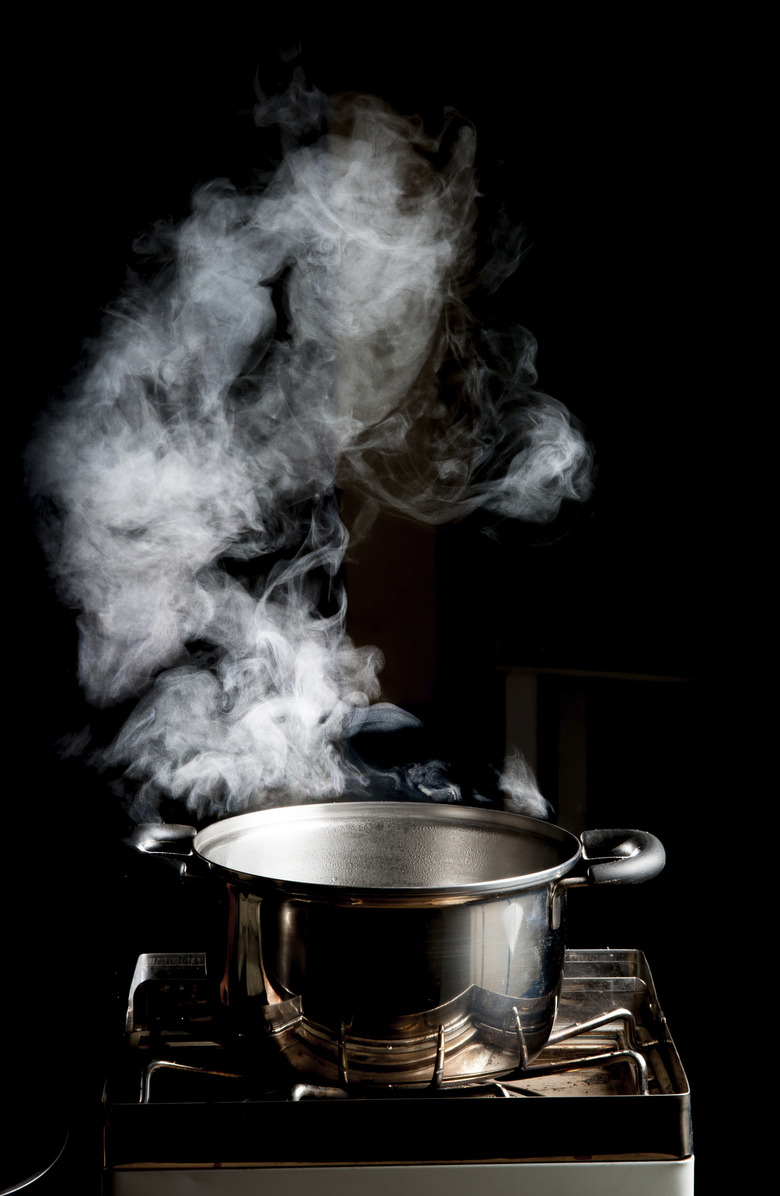How Does Temperature Affect The State Of Matter?
Temperature is a measurement of the average kinetic energy of the molecules within a substance and can be measured using three different scales: Celsius, Fahrenheit and Kelvin. Regardless of the scale used, temperature exhibits its effect on matter due to its relationship with kinetic energy. Kinetic energy is the energy of motion and can be measured as the movement of molecules within an object. Examining the impact of different temperatures on kinetic energy identifies its effects on the various states of matter.
The Freezing or Melting Point
The Freezing or Melting Point
A solid is composed of molecules that are tightly packed together, thereby giving the object a rigid structure that is resistant to change. As temperature rises, the kinetic energy of the molecules within the solid begin to vibrate, which decreases the attraction of these molecules. There is a temperature threshold, referred to as the melting point, at which the vibration becomes sufficient enough to cause the solid to change to liquid. The melting point, in turn, also identifies the temperature at which the liquid will change back to the solid, so it is also the freezing point.
The Boiling or Condensation Point
The Boiling or Condensation Point
In a liquid, molecules are not as tightly compressed as in a solid, and they can move around. This gives liquid the important property of being able to take the shape of the container in which it is held. As the temperature — and thus the kinetic energy — of a liquid increases, the molecules begin to vibrate more rapidly. They then reach a threshold at which their energy becomes so great that the molecules escape into the atmosphere, and the liquid becomes a gas. This temperature threshold is called the boiling point if the change is from liquid to gas as the temperature increases. If the change is from gas to liquid as the temperature falls below it, it is the condensation point.
Kinetic Energy of Gases
Kinetic Energy of Gases
Gases have the highest kinetic energy of any state of matter and thus occur at the highest temperatures. Increasing the temperature of a gas in an open system will not further change the state of matter because the gas molecules will only become infinitely further apart. In a closed system, however, increasing the temperature of gases will result in an increase in pressure due to the molecules moving faster and the increased frequency of the molecules hitting the sides of the container.
Effect of Pressure and Temperature
Effect of Pressure and Temperature
Pressure is also a factor when examining the effects of temperature on the various states of matter. According to Boyle's Law, temperature and pressure are directly related, meaning that an increase in temperature results in a corresponding increase in pressure. This is again caused by the increase in kinetic energy associated with increasing temperature. At sufficiently low pressures and temperatures, solid matter may bypass the liquid phase and be converted directly from a solid to a gas through a process called sublimation.
Cite This Article
MLA
Perdue, Matthew. "How Does Temperature Affect The State Of Matter?" sciencing.com, https://www.sciencing.com/temperature-affect-state-matter-8605451/. 24 April 2017.
APA
Perdue, Matthew. (2017, April 24). How Does Temperature Affect The State Of Matter?. sciencing.com. Retrieved from https://www.sciencing.com/temperature-affect-state-matter-8605451/
Chicago
Perdue, Matthew. How Does Temperature Affect The State Of Matter? last modified March 24, 2022. https://www.sciencing.com/temperature-affect-state-matter-8605451/
